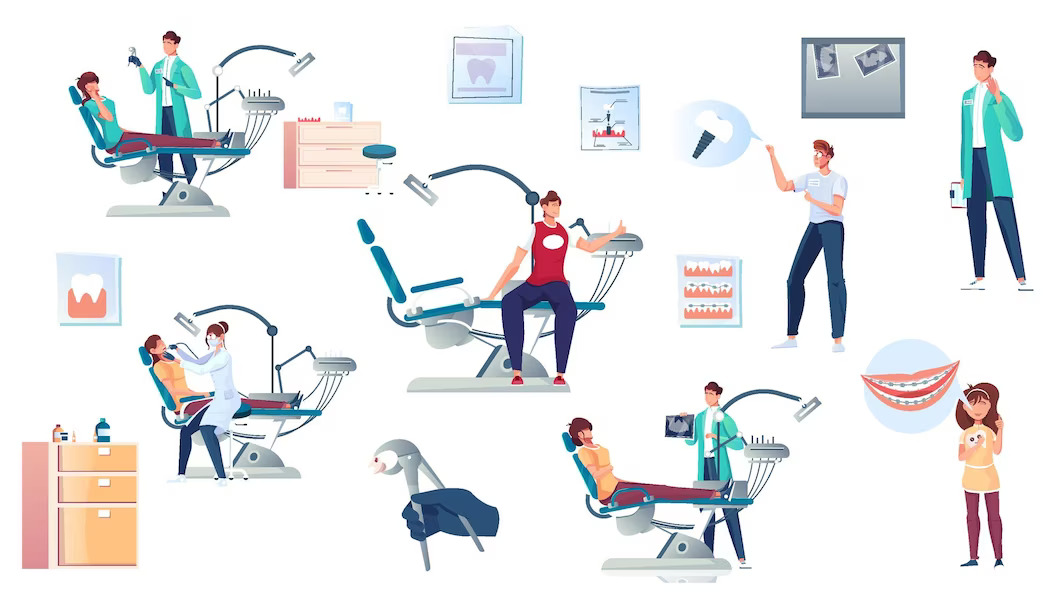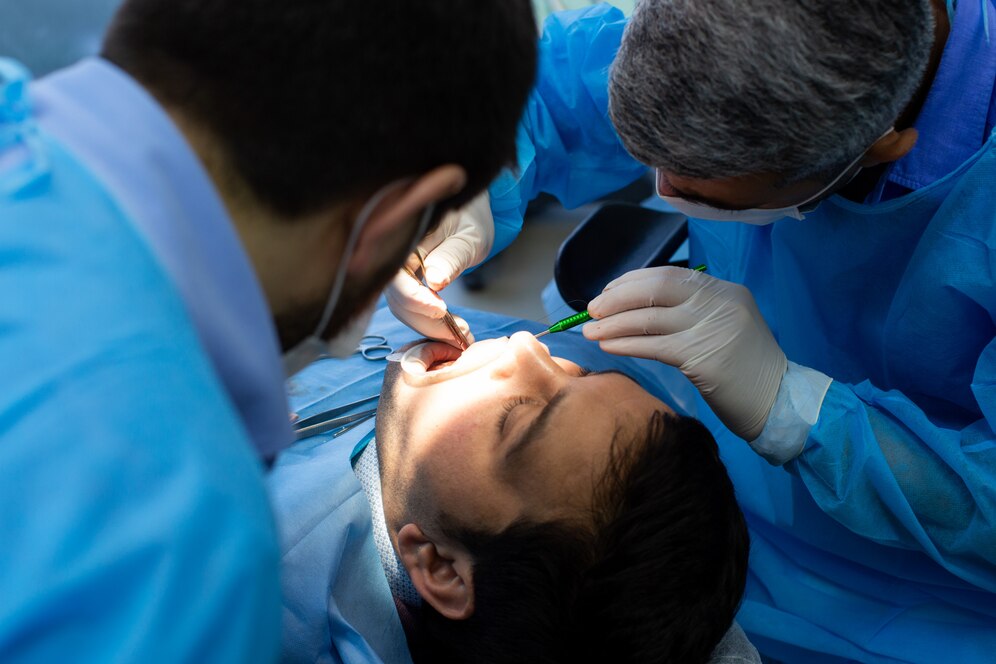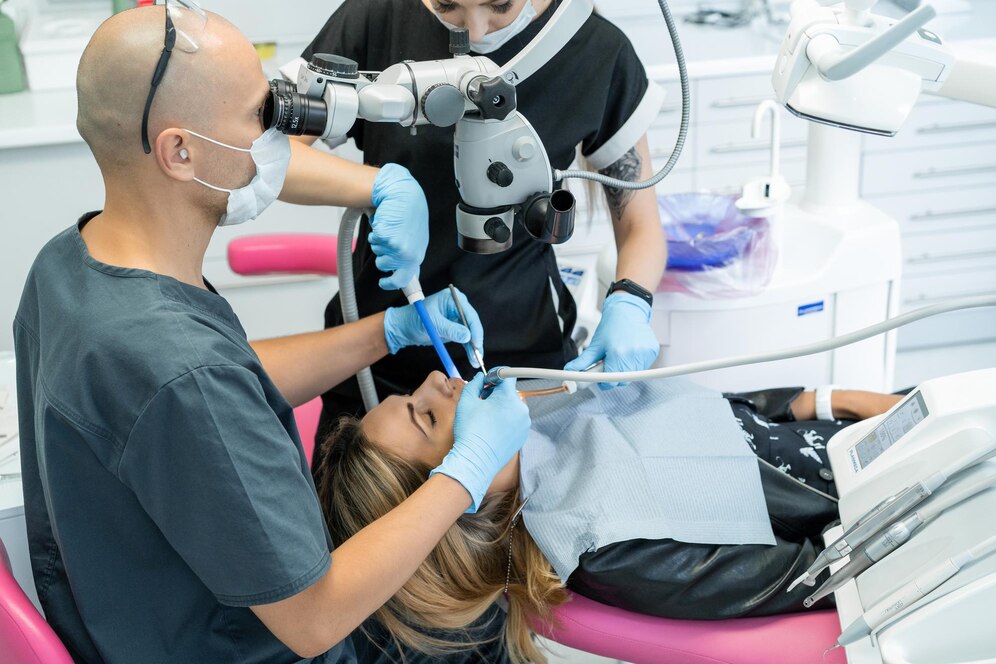Advancements in Dental Surgery Techniques: What You Need to Know
The field of dentistry is also developing as technology does. Dental treatments are being revolutionized by many technical advances in 2023, making them more effective, precise, and minimally intrusive. Dentists are able to provide better and more appealing treatment for their patients. It is because of modern technologies such as digital imaging, laser dentistry, and nanotechnology. If you’re interested in the most recent advances in dental surgery, keep reading to discover more about the innovative developments that are altering the industry. In this blog, we will deeply explore the advancements in dental surgery.
Advancement In Dental Surgery Techniques

-
Advanced Intraoral Scanner
The capacity of the Intraoral Scanner to capture realistic 3D representations of the interior of the mouth in real time is transforming dentistry. This cutting-edge equipment enables exact diagnosis and treatment plans. It also enhances the patient experience through painless and quick treatments. The intraoral scanner has become a necessary tool in all dental setups.
-
Computerized Technology
For many years, dentists had to rely on X-rays to assess a patient’s mouth. While these diagnostic tools are useful in their own right, they are far from perfect—and they may miss certain oral issues. Enter a plethora of advanced digital imaging tools, which are raising the bar to develop a comprehensive assessment of a patient’s oral health.
Computer technology is helping every field. it is also helping with dental surgery. Computer technology controls and manages the use of intra-oral cameras during dental surgery.
-
Laser Dentistry
Laser dentistry is one of the big advancements in dental surgery. It is a non-invasive procedure. The preciseness it gives is the ultimate benefit. It has reached its peak of popularity. Most dental surgeons use it in dental surgery and procedures to remove deteriorated tissues from the oral cavity. It targets the area, other areas are not affected. So the result is very little bleeding and swelling.
-
Teledentistry

Many people avoid going to the dentist for personal reasons. The elderly and disabled persons feel it is really difficult to visit dental clinics. This is where teledentistry can help. Individuals who do not have regular access to a dentist may benefit greatly from the ability to provide certain dental services over the Internet. This technology may also be useful for people who live in rural areas where there are no dental offices. Live video chatting software was used. If the dentist notices a problem, they will recommend that you visit a local dentist for further evaluation.
This automated design and computerized production method is used to simplify the process of getting crowns and bridges. Instead of a dentist making a mold of the tooth for a crown procedure, this technology can take a picture of the tooth. Then it sends it to a computer, which can then immediately begin creating the crown.
-
Improved Dental Implants
Dental implants have not only become more common in recent years, but they have also become more dependable. Before these advancements dental implants used to fail. Now, they have a much higher success rate, reaching around 95%. A typical dental implant will last for more than 15 years.
Gum disease treatment has begun to include regenerative treatments in recent years. Bone grafts, membranes, and proteins can now be used to promote tissue growth, allowing bone and tissue regeneration. This is helpful in the fight against gum disease.
-
Navigational Surgery Using Robotics
Technological and computer science advancements have resulted in an increase in the use of robotics in navigational surgery for a variety of medical specialties. From the early 2000s’ development of the da Vinci surgical system to today’s more advanced artificial intelligence (AI) techniques, similar revolutionary technologies are now being introduced into dental surgery that can assist practitioners with a variety of procedures. The use of robotics in dental surgery has advantages over freehand techniques for instrument placement.
-
Endodontic Microrobots
Endodontic microrobots offer the potential to improve endodontic treatment quality while reducing procedure errors. The Advanced Endodontic Technology Project, for example, employs micromachine technology, in which a microrobot is mounted on the tooth requiring treatment and is computer-controlled and monitored while performing the root canal procedure.9 In a nutshell, the micromachine performs automated precision probing, drilling, cleaning, and filling to help the clinician provide error-free therapy.
Conclusion
In conclusion, countless advancements have been made in the field of dental surgery. These advancements are the result of the increasing success of IT as well as technology. Artificial intelligence including robotics is playing its role to make dental surgery an easy procedure for both the dentist as well as the patients. The implants that are made now are more durable than before. Robotics in dental surgery helps complete the whole procedure without any error. Intra-oral cameras are like a blessing for those patients who feel it is really very difficult to keep their mouths open. In this blog, different advancements in dental surgery have been explored that you must know.

















